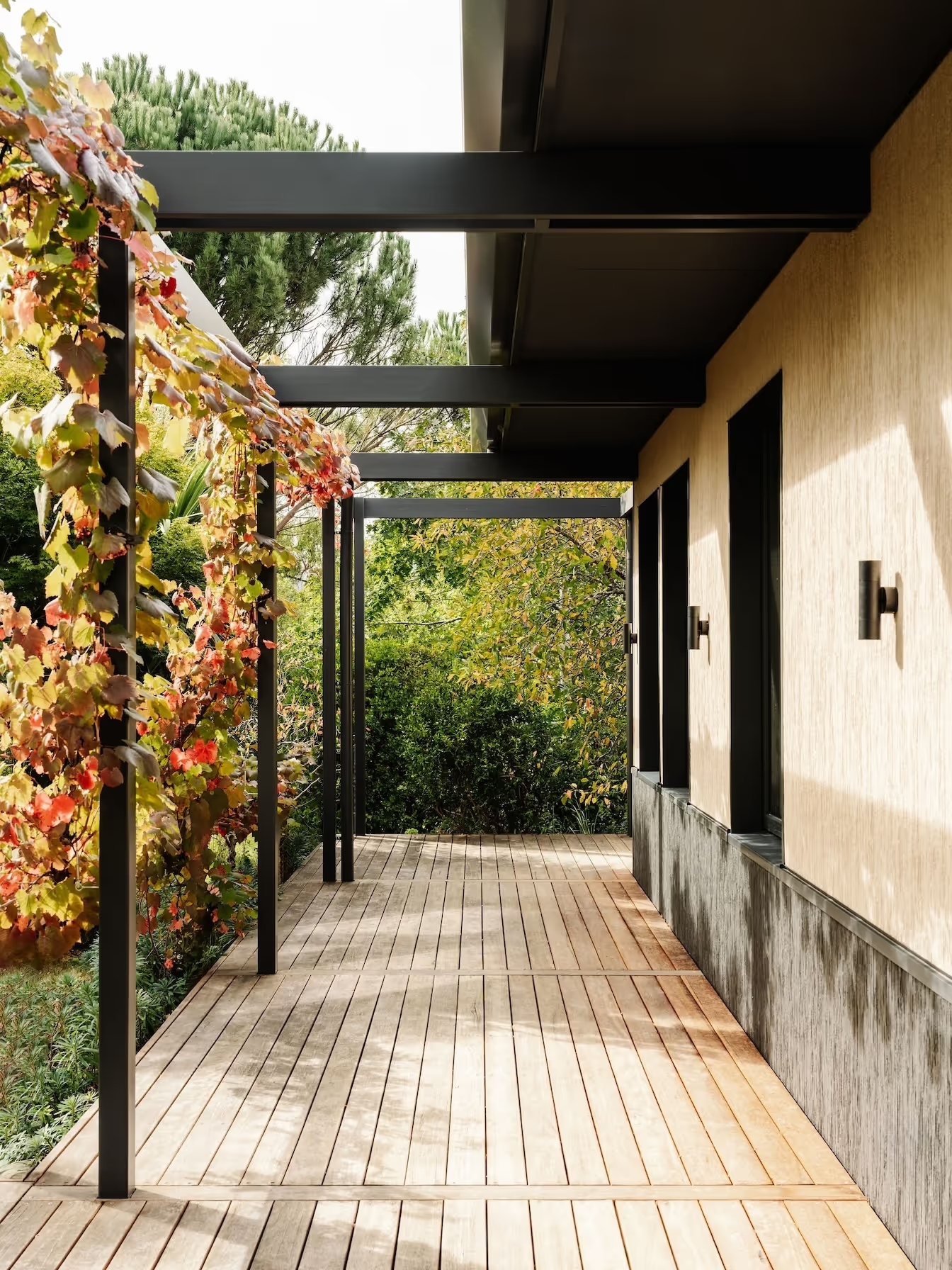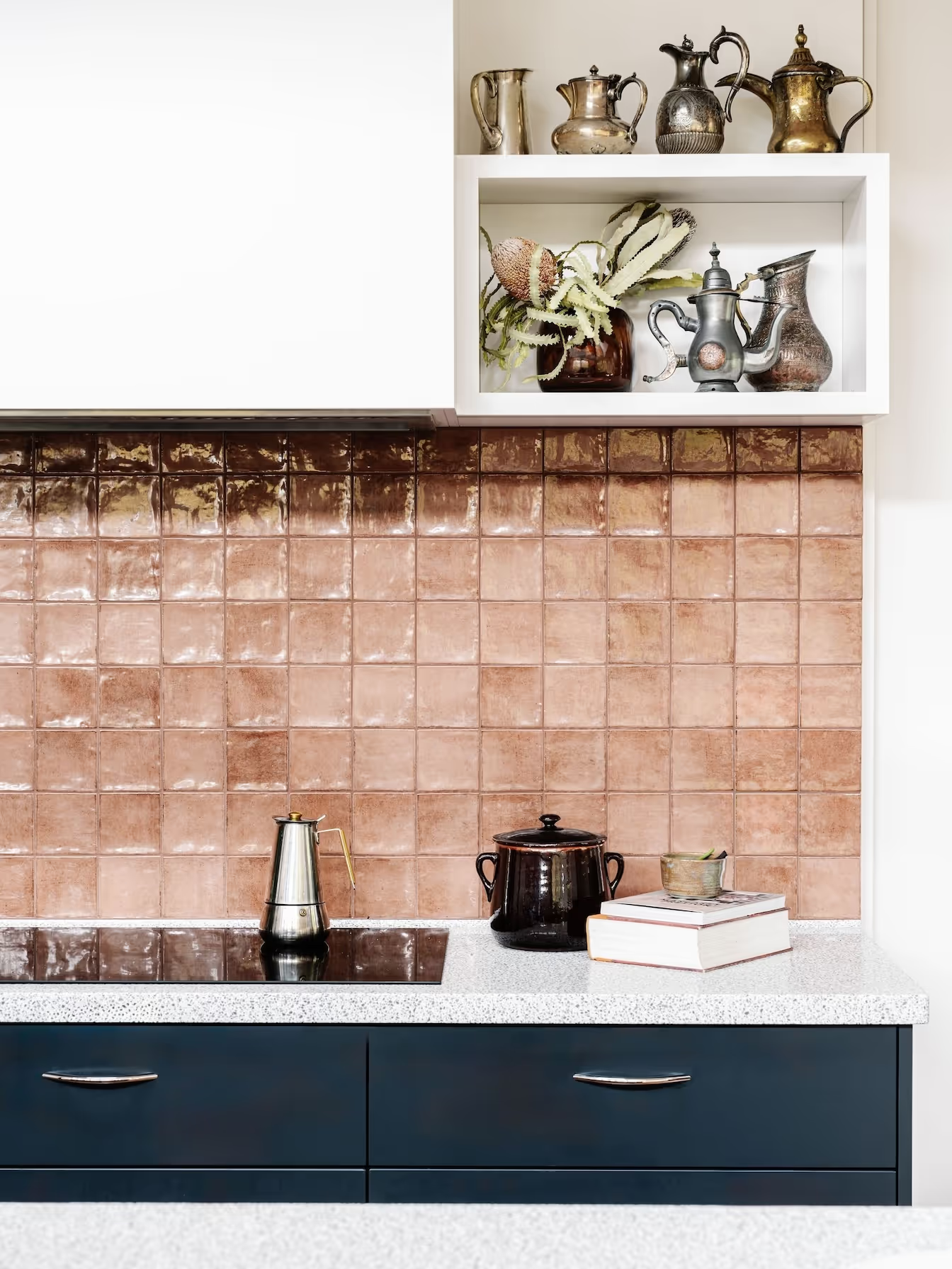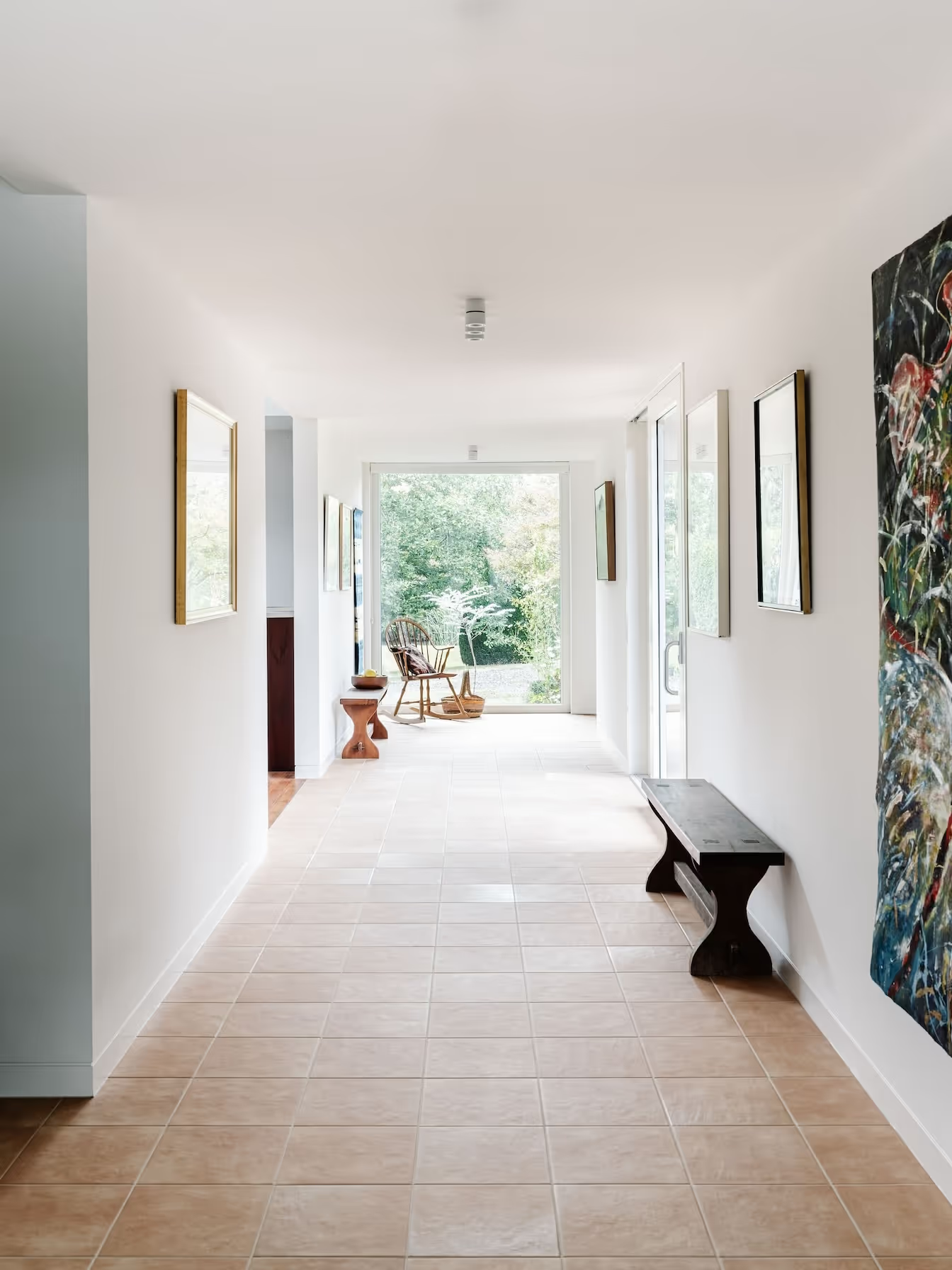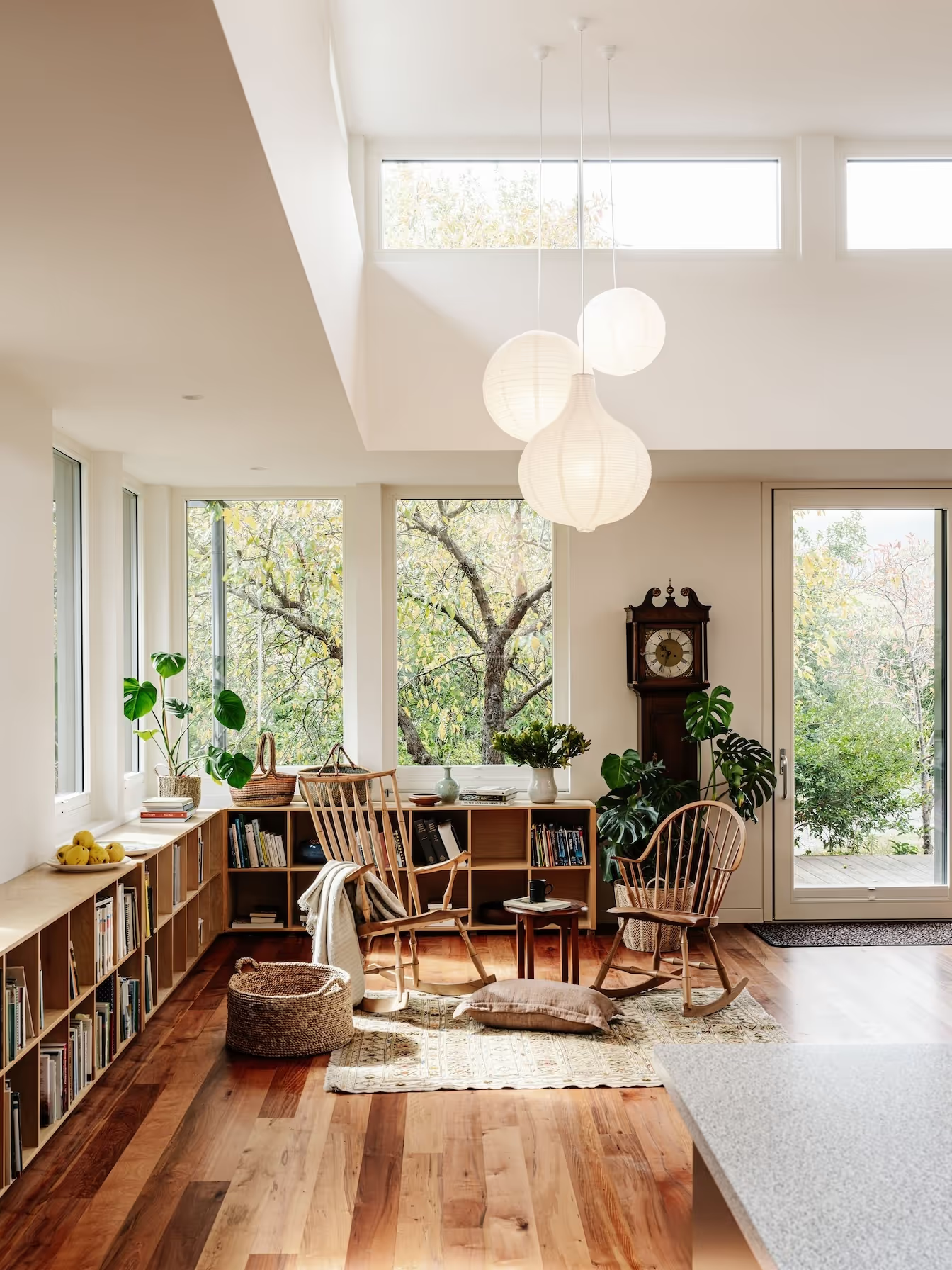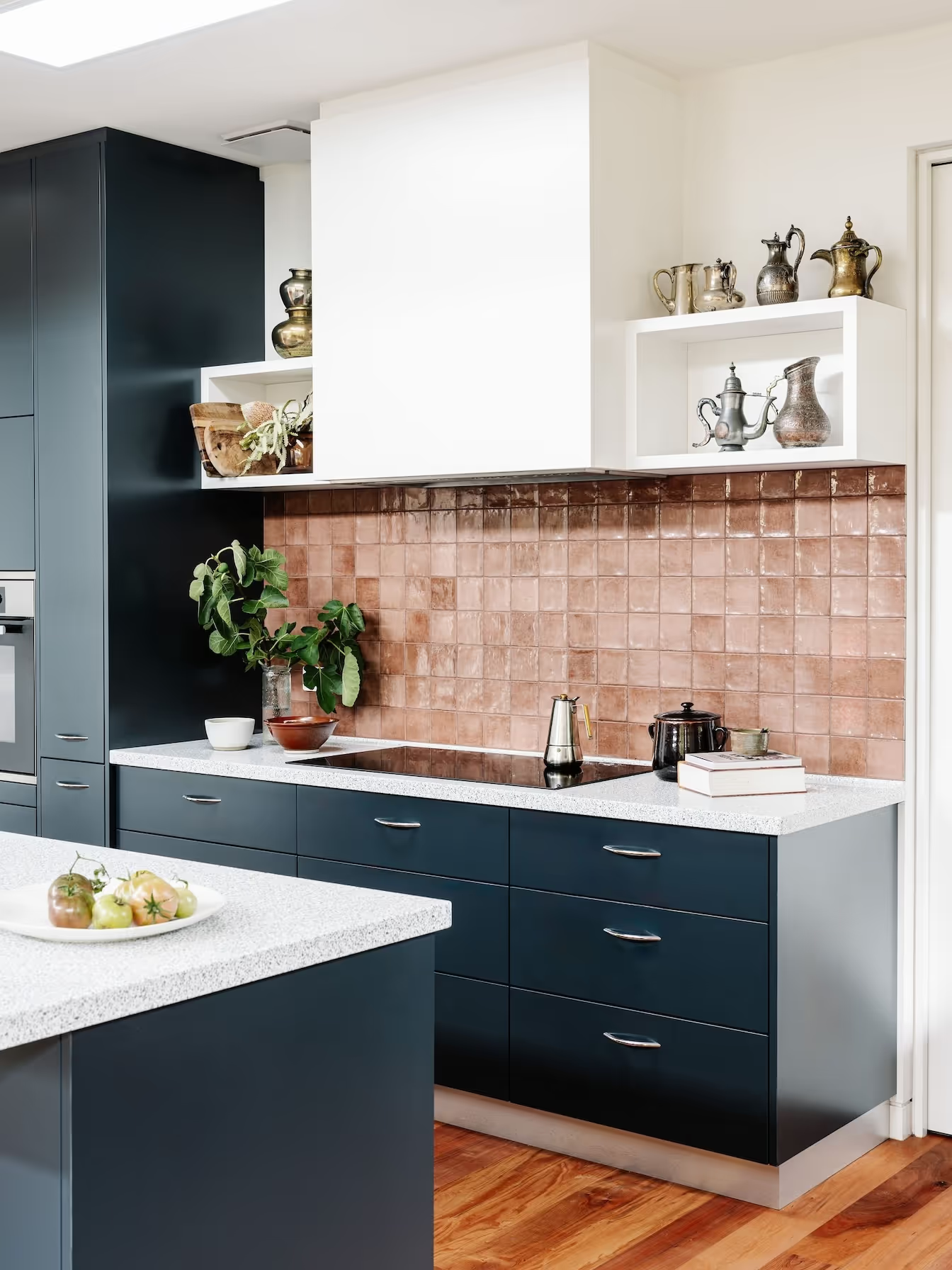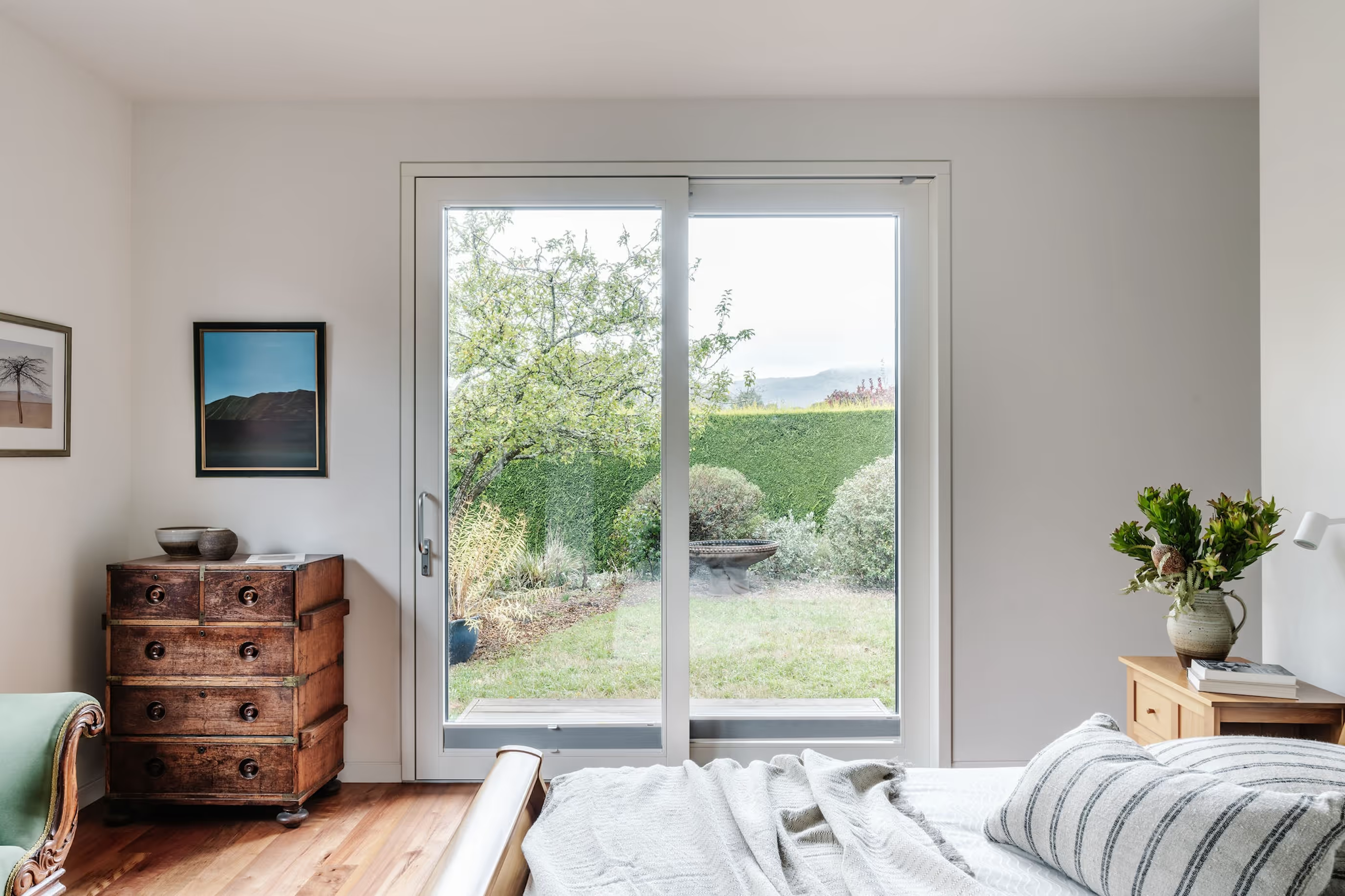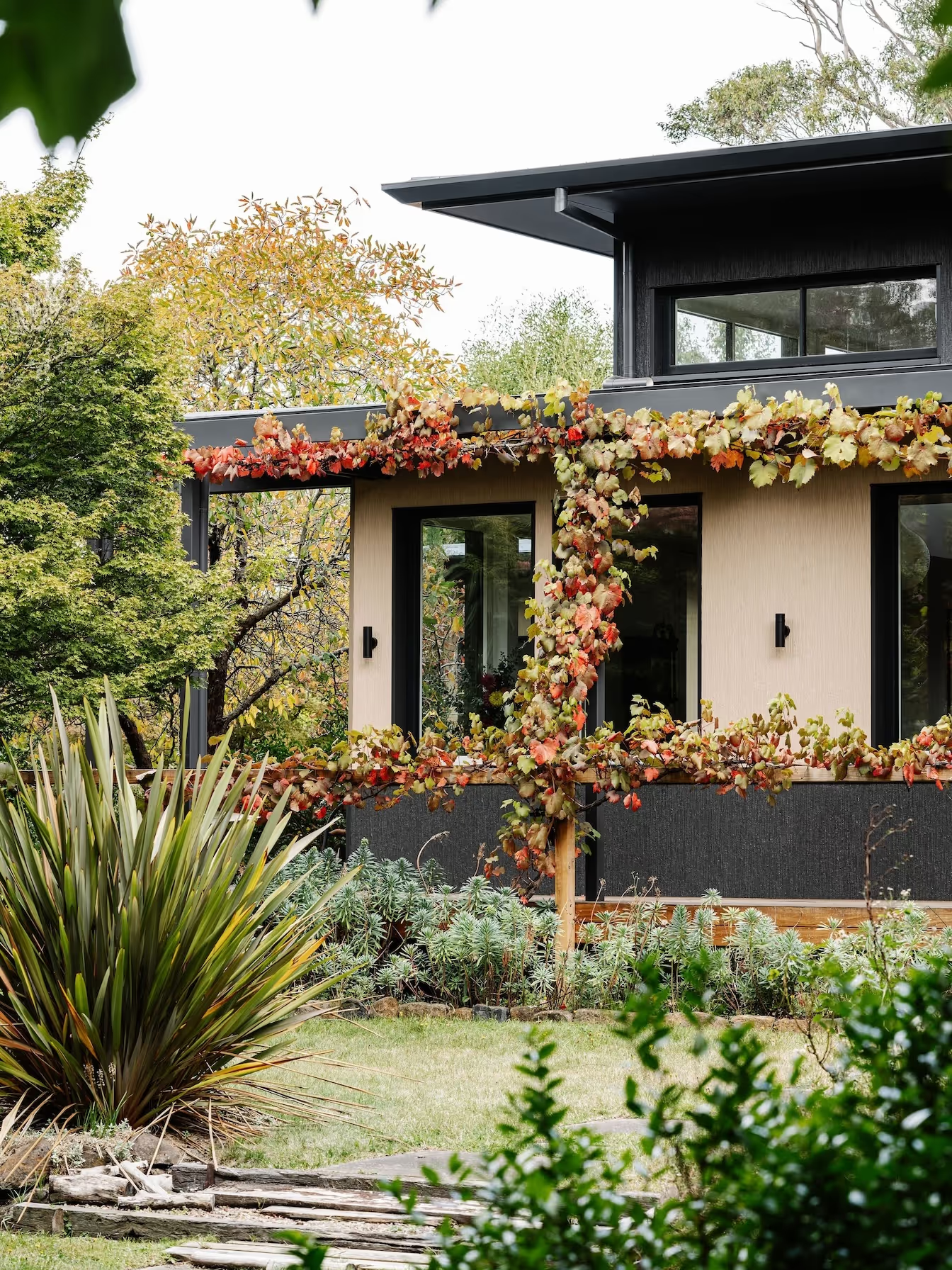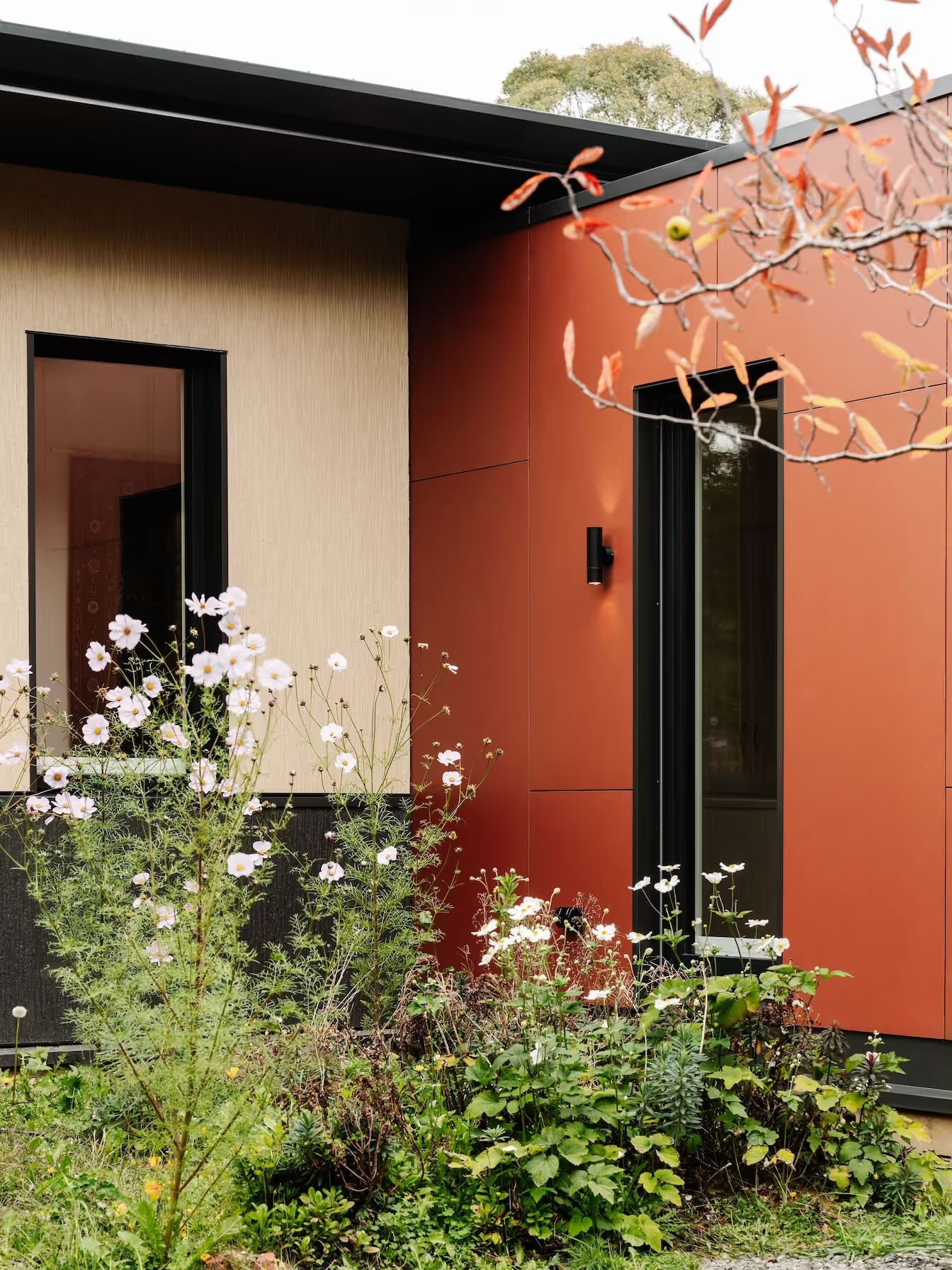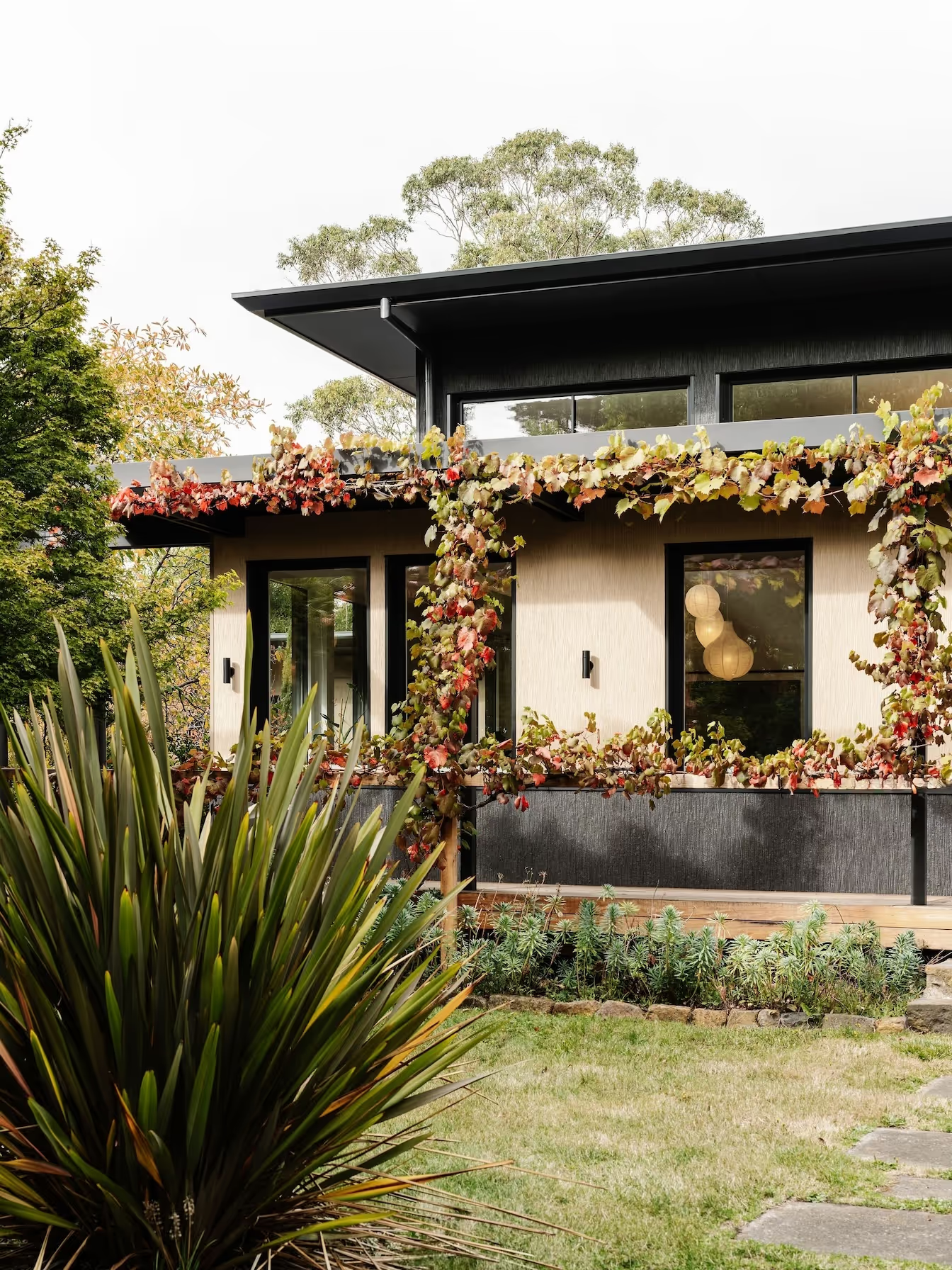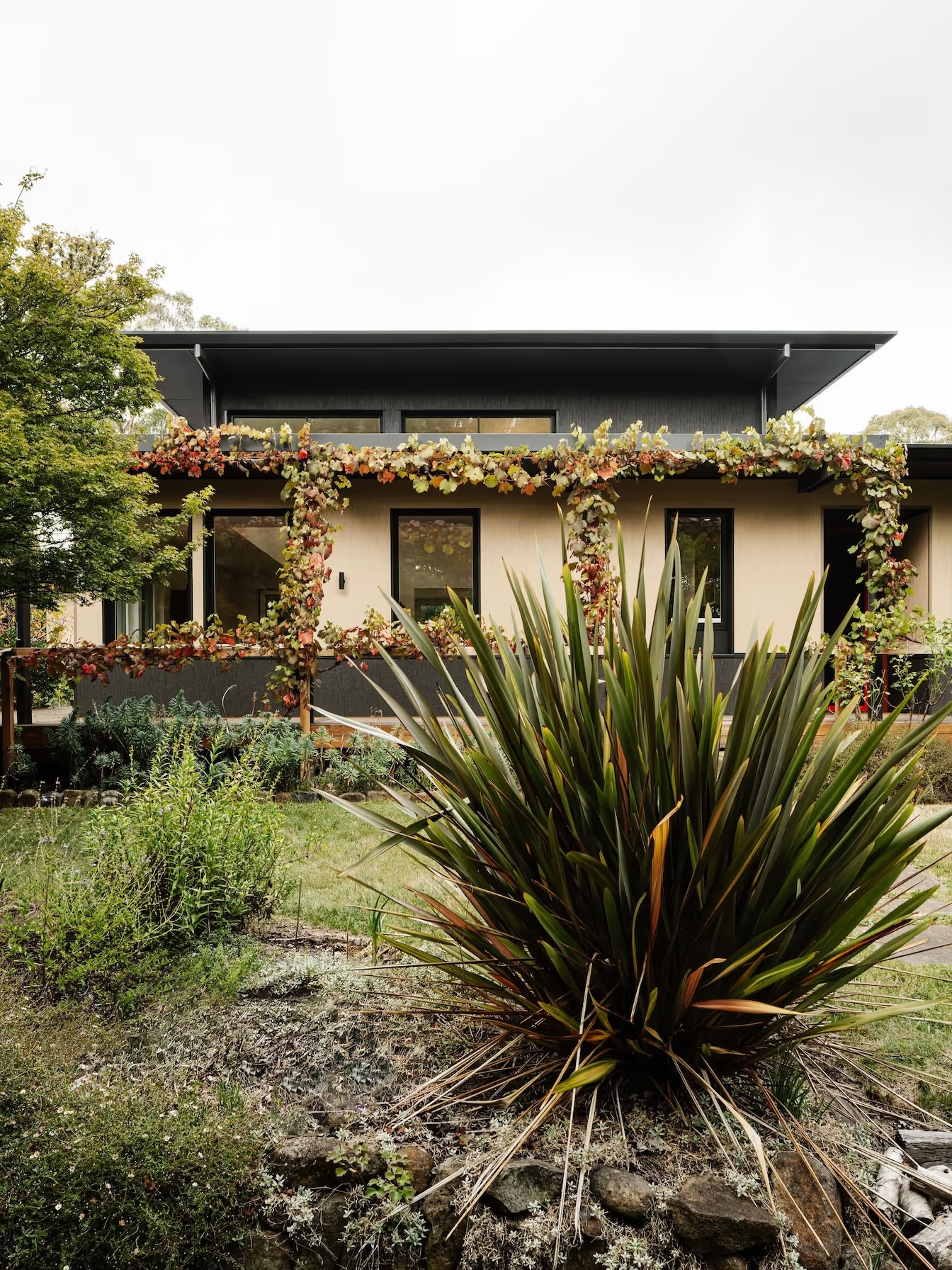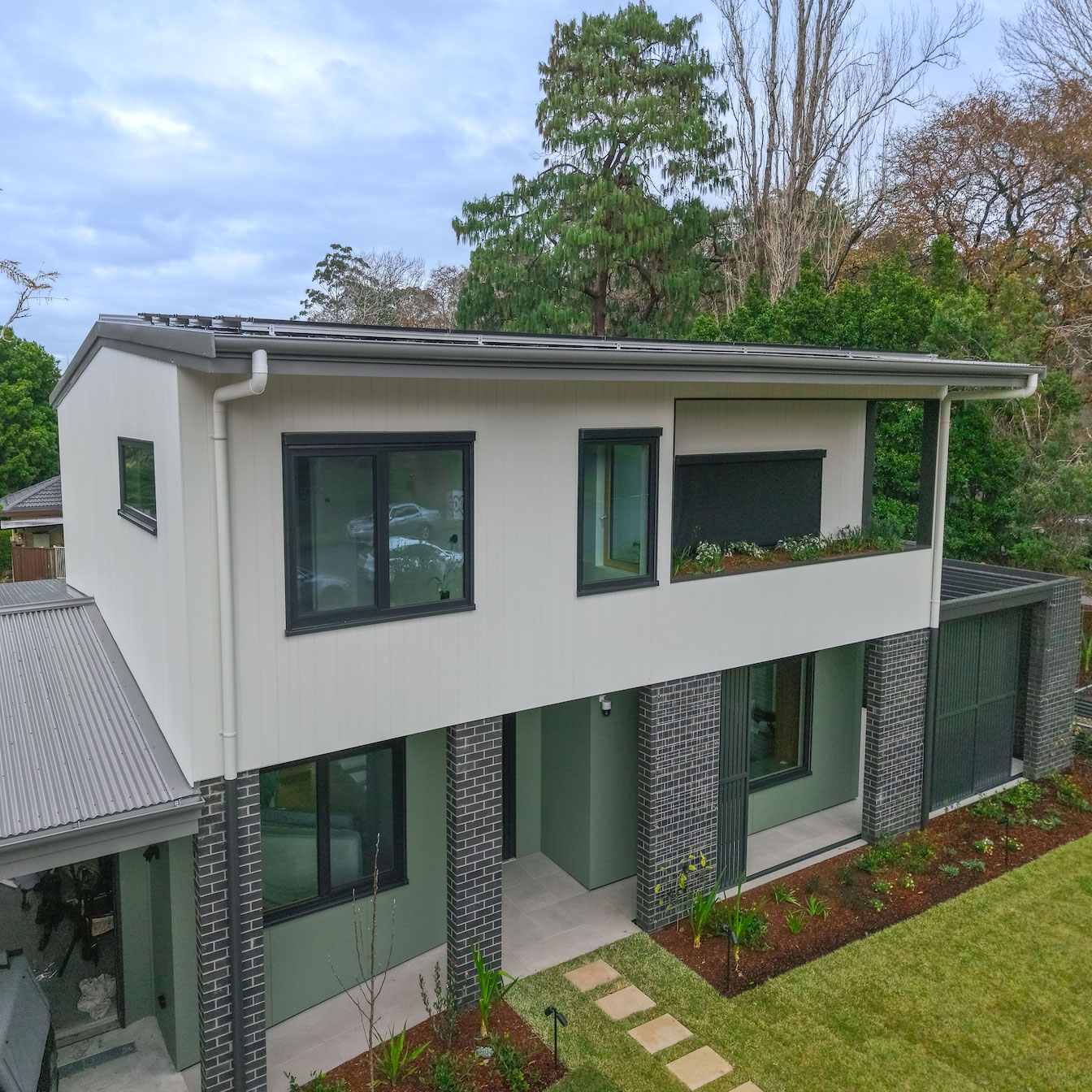
This knock-down-rebuild assignment celebrates the glorious established trees and gardens on the generous site and creates a healthy, energy-efficient forever home that nestles into its natural environs.
The clients had a strong respect for design traditions from around the world and it was a delight to closely collaborate with them on the form and feel of their new home. Echoes of Frank Lloyd Wright’s work and traditional Japanese courtyard houses can be found here.
The house features a lower pitch roof with wide eaves and high-level windows that form a lantern shape over the living area. A contemporary pavilion-style layout creates diverse indoor and outdoor environments to enjoy, with a cluster of courtyards flowing into and around established gardens. Landscaping was no afterthought here, it shaped the design from the earliest stages. Much is made of daylight and natural materials are integral to the project, hallmarks born of the architect’s love of biophilic design.
Nestled in the Macedon Ranges an hour north-west of Melbourne, Woodend is a delightful spot that experiences hot summers and cold, wet winters. Upgrading the existing ‘wooden tent’ wasn’t feasible. The owners wanted a healthy, comfortable indoor environment, valued energy efficiency for its financial and carbon emissions savings and required a design that allowed for graceful ageing-in-place.
This design succeeded on all counts. Energy efficiency and comfort were achieved thanks to energy modelling at design stage, which guided the specifications and ensured the owners’ expectations would be met. High-performing triple-glazed windows were chosen. Lightweight timber framing, wood-fibre insulation, considered design and excellent build quality ensure no heat lost to thermal bridges or leaks in the building envelope. Indoor air quality was assured by way of a whole house ventilation system while the design also provides for passive cross-ventilation when desired.
The size and the shape of the site made it possible to orient the house perfectly to harvest sun and warmth in winter, while eaves and strategically-placed external blinds provide crucial summer shade. The all-electric house needs only very small amounts of energy for heating and cooling, which slashes the home’s operational carbon emissions. Embodied carbon emissions were reduced significantly by careful material selection. No concrete was used.
The project aimed for the Low Energy Building standard, a certification established by the Passive House Institute. This allows for a slightly higher heating and cooling demand and the airtightness target is easier to achieve compared to the classic Passivhaus standard. The experienced Passivhaus builder did a superb job and achieved 0.56ACH, which meets the classic Passivhaus target. This is all the more remarkable given the externally-vented rangehoods and bathroom exhaust with six thermombox vents (special vents that seal when not in use) and multiple make-up air intakes.

